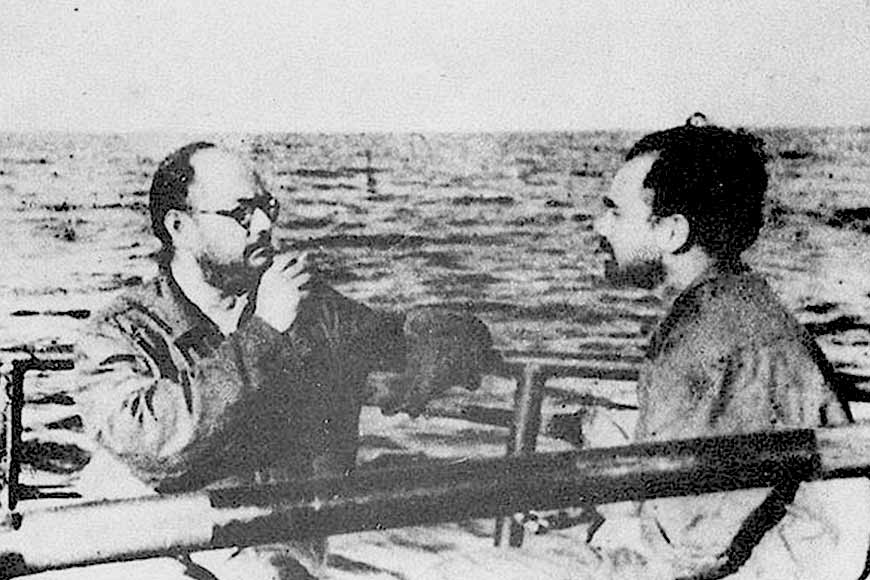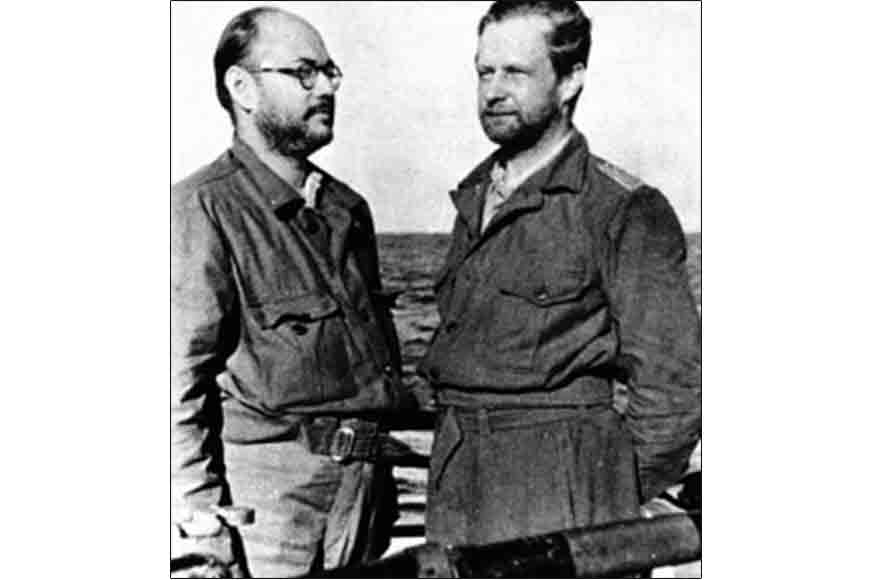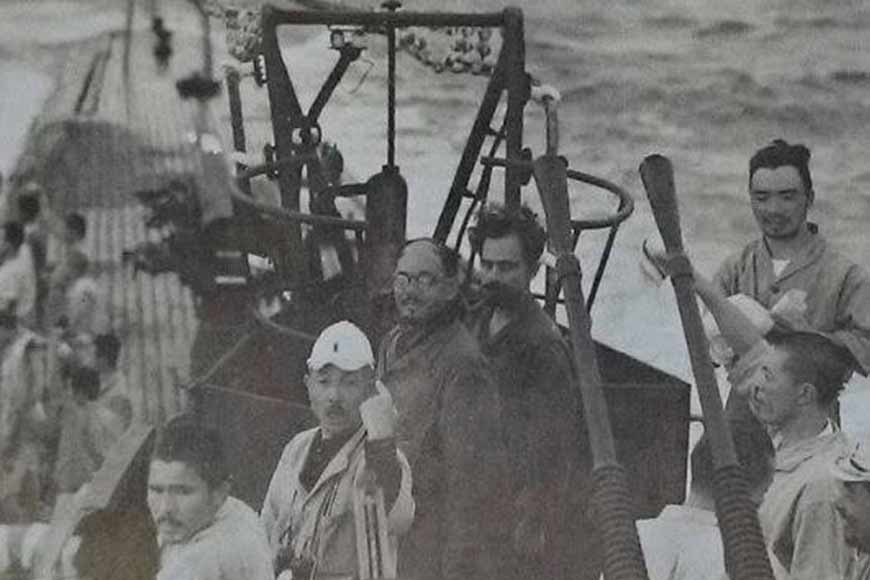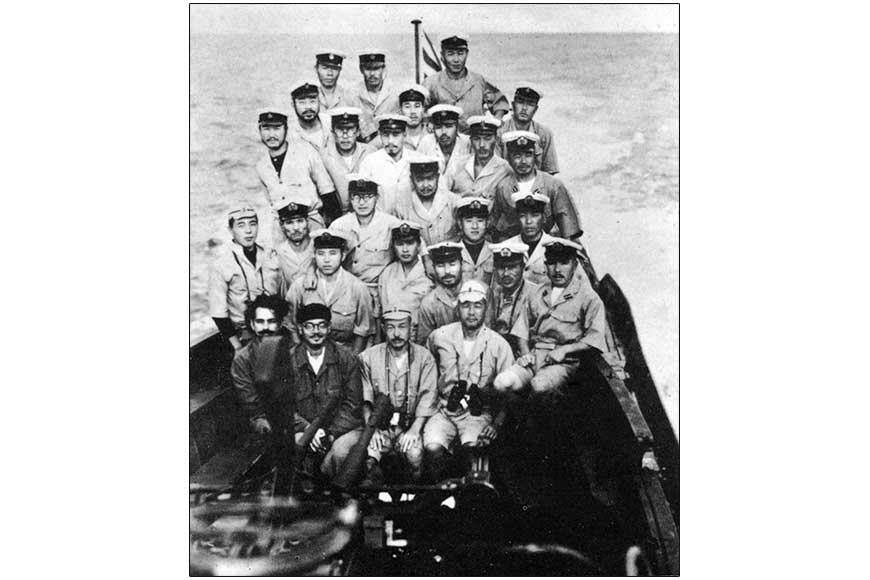‘It was the most dangerous time in my father’s life’

“The submarine started from Kiel (capital of the northern German state of Schleswig-Holstein), and the crew were not told (the truth about) where the two men were going; all they knew was that they had to take two machinists to northern Scandinavia. On the eve of their departure, some luggage was loaded onto the submarine; my father and his ADC Abid Hasan Safrani were brought on board in secret. The concern was that the British might learn that Subhas Chandra Bose was on a submarine bound for the Far East.”
Thus speaks Dr Anita Bose-Pfaff, daughter of Netaji Subhas Chandra Bose and his Austrian wife Emilie Schenkel. Her reminiscences about her late father, who died when she was about three and who she never saw in person, form the basis of a series of conversations titled ‘The Anita Dialogues’ conducted by Sampriti, an organisation of Bengalis in Germany, in honour of the 125th year of Netaji’s birth.
History tells us that on February 8, 1943, at the peak of World War II, Netaji and Abid Hasan set off on a German U-180 submarine or U-Boat bound for the Far East. They were to be handed over to a Japanese submarine at Madagascar, having journeyed through terribly dangerous waters patrolled by chiefly British and American submarines. As Dr Bose-Pfaff recounts in the opening episode of the series, the German crew knew neither the true identity of their passengers, nor their eventual destination.
 En route japan Bose with Captain Werner Musenberg on the deck of submarine U-180
En route japan Bose with Captain Werner Musenberg on the deck of submarine U-180
History tells us that on February 8, 1943, at the peak of World War II, Netaji and Abid Hasan set off on a German U-180 submarine or U-Boat bound for the Far East. They were to be handed over to a Japanese submarine at Madagascar, having journeyed through terribly dangerous waters patrolled by chiefly British and American submarines.
“The submarine travelled past the northern parts of Britain to the Atlantic Ocean. The submarine theatre of war was so dangerous that three-quarters of all the submarine crew of the Axis powers were killed during World War II. The submarine in which my father travelled was also eventually sunk,” recalls Dr Bose-Pfaff.
Most of her information regarding this perilous and tremendously thrilling voyage comes from the late Hermann Wien, chief machinist on board the U-Boat, and one of the lucky submariners to have survived the war. “When my husband (Dr Martin Pfaff) and I moved near Munich, he was living in Augsburg. He heard about me and got in touch, and it is from him that I heard stories of that voyage,” she explains. “This was the beginning of one of the most thrilling and dangerous parts of my father’s life. Even today, submarines are not the most comfortable of places to be, and those during the war were even more cramped. Plus, they had to negotiate some of the world’s most dangerous waters, forever afraid of enemy torpedoes and aerial attacks. It must have been extremely trying.”
For his part, Wien wrote a brief description of that voyage in German, in which he provided a vivid account of the bewilderment among his fellow submariners regarding their passengers. “A guessing game began on board, who were the two gentlemen with the foreign, yellowish-brown complexions? Their dark clothes and hats as well as dark horn-rimmed glasses made them mysterious,” he wrote, describing one of the two as “strong and stocky, about 1.70 m tall”, and the other as “small and slim”.

The submarine made its way under escort past the Danish islands of Skagerrak, to Christiansand. Nobody was allowed on land. The crew correctly assumed that this was owing to their mysterious passengers. “The wildest rumors were buzzing through the boat,” wrote Wien. “One of the boys even said: ‘This is the Indian Adolf, he was with Hitler for sure. I saw him in a magazine not long ago’.” However, their commanding officer assured them that the two men were two specialist engineers going to help in a submarine bunker construction in Norway.
 The crew of the Japanese submarine I 29 Bose sitting in the front row, second from left, April 28,1943
The crew of the Japanese submarine I 29 Bose sitting in the front row, second from left, April 28,1943
It was only once the submarine reached Egernsund near Bergen, when their escort finally departed, that the crew were informed about the identity of their guests and the destination of their journey. “We had taken the Indian freedom fighter Subhas Chandra-Bose and his adjutant Habid Hasan (sic) on board in Kiel, our task was to bring both of them undamaged to the sea area of Madagascar in order to continue their journey to India or to the Burma front to the Japanese underground. Passing boat I-29,” wrote Wien.
Dr Bose-Pfaff adds, “Very few submariners survived the war. Of the original crew of around 60 on my father’s U-Boat, only around 15 were still alive when we arrived in Germany in 1971. But they invited us to a dinner in Augsburg, and my mother was also present.”
The journey may have ended in July 1943, but the romance will endure.










